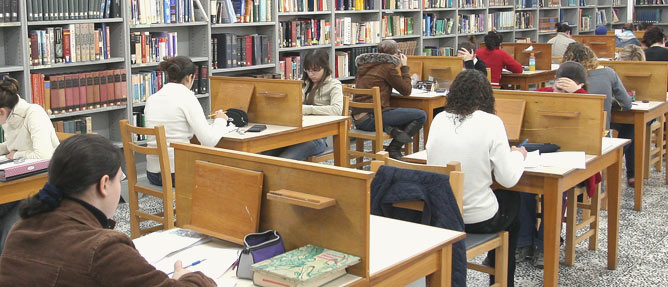Education 326
Book Report
On
Book: "DEVELOPING A QUALITY CURRICULUM"
by Allan A. Glatthorn
Report submitted to:
Dr. R. Ghusayni
Spring 2001
Summary
“Developing A Quality Curriculum” is a highly organized informative book that lays down the guidelines for obtaining a “total quality curriculum” as quoted by the author of this book (A.G., p.3). It was divided in a way that suits the reader’s understanding and pattern of thinking. The book explains elaborately the entire organization groups involved in curriculum work, the building of foundations and components of a district curriculum, the support and implementation of the curriculum, and finally the development and auditing of the school and classroom curriculum. Thus, we can say that it is mainly divided into two parts. The first part deals with foundations, while the second part tackles curriculum development in the school and the classroom.After introducing the reader to the different chapters in the book the author starts from scratch or square one where he explains who and which parties are involved in the managing the organization and planning of curriculum work. There are several teams included in the formation of a district curriculum. Every member plays an integral part but the Curriculum Planning Council and the Task Forces assume the biggest role. The Curriculum Planning Council “serves as the chief management group for identifying curriculum needs, developing a curriculum calendar, evaluating the curriculum, and appointing and monitoring the work of task forces.” (A.G., p.10) The Curriculum Task Forces, on the other hand, accomplish most of the work of curriculum development. Definitely there are other groups helping the Curriculum Planning Council and the Task Forces. In addition to that and before shifting to the actual laying of foundations the author also explains the generation of a general long-term plan and a specific project plan. The general long-term plan “is developed by the Curriculum Planning Council” (A.G., p.12) then the Task Forces prepare the detailed project plans and reviewed by the Curriculum Planning Council.
After the assignment of the organization system, the real work starts. The Curriculum Planning Council takes the initiative by laying the three foundations of the district curriculum. The three foundations are: the district’s curriculum policy, goals, and vision of a curriculum of excellence. These foundations set the limits, aspirations and the desired outcomes of the curriculum under development. The curriculum policy lays the regulations and laws to what should be taught in schools, the goals propose the outcomes of desire, and the vision serves as a union of the different efforts towards a common dream. Although the laying of these foundations demands the cooperation of all the organization system, it must occur under the leadership of the Curriculum Planning Council in order to have a unified outcome. Once the foundations are set the action of renewing or developing a new district’s K-12 curriculum guide in a particular subject area need to take place. To renew a curriculum refers to revising and modifying the existing one and to develop one is to produce an original curriculum. Of coarse, there are multiple ways in which a curriculum can be created. However, before starting the whole process the elements that will determine the whole work have to be known since they shape the whole process. The major work here is performed by the joint effort of the Curriculum Planning Council and the Task Forces. They have to lay down the elements since they shape the whole work; they are the small pieces that give us a full view of the whole big picture.
Some of these elements include State frameworks and guidelines, teacher recommendations and research on child and adolescent development. This is part one of the big picture. Part two is to know what will be produced whether it was a summary, a framework, a list or any other kind of material. Part three is the division of roles. Specific roles need to be assumed by different members of the organization teams. The different members need to be trained and finally the material to be used determined. The development of a mastery curriculum is a detailed step-by-step process. Here I need to clarify what a mastery curriculum is and to differentiate from the kinds of curricula. All curricula are analyzed under two constructs, which are “importance and structure.” (A.G., p.27) A mastery curriculum has high importance and high structure. An organic curriculum has high importance but low structure. This is not it; there are two other types of curricula. The teacher-determined enrichment curriculum is of low importance and high structure and finally the student-determined enrichment curriculum is of low importance and low structure. Although not all educators welcome the idea of a mastery curriculum, this book tackles its development and renewal. The teachers of different subject areas write down the other types of curricula individually. Now back to developing a new mastery curriculum. As I mentioned earlier, it is a highly organized process. First the goals are identified and aligned with the subjects, State frameworks are analyzed, goals are refined, a knowledge base report is prepared, hallmarks of excellence and the curriculum framework are developed, the strands are identified, a chart is developed, then the curriculum materials are outlined, the curriculum guide is developed, the guide is evaluated, and finally the way of distributing it is determined. (A.G., p. 34-45) These steps are very elaborate and need time. However, if the availability of resources were scarce, a district would rather renew the existing curriculum rather than developing a new one. Renewal involves revising the goals and the rest of the elements of the guide and updating the knowledge base.The work doesn’t stop at distributing the curriculum guide since now it needs support. Aligning the curriculum, creating supporting material, and monitoring it obtain support. Aligning the curriculum deals with aligning the written, the tested and the supported curricula. Supporting material is used in order aid administrators and teachers. Monitoring the curriculum can be done through a variety of ways. Making informal observations and analyzing test scores are two ways.
Now we shift to developing a school curriculum, which requires effective leadership tasks. The principal has to provide support for teachers in curriculum work and based on the new curriculum form the school’s own goals and visions. In coordination with the school’s developed curriculum a classroom curriculum is created. Teachers can do it individually or in teams. Here the issue of integration pops to educators. There are different ways of integration. Subjects can be integrated while keeping them separate or two or more subjects can be integrated. Both methods can be performed in different ways but both need the coordination between the teachers of different subject areas. Then in writing down the syllabus teachers need to pinpoint where they are using integration. While developing a syllabus teachers first need to have a portrait of the year, then identify the titles of the units to be taught, next allocate the time needed for instruction, and finally systematize the decisions in the syllabus. However, whether or not teachers create a syllabus, they have to have a yearly plan. They will never escape this task. These plans indicate what will be taught, when it will be taught, and for how long it will be taught. If a syllabus already exists then it can be recorded in the yearly calendar. The only difference is that the yearly plans delineate the weeks of the school year and the major events happening during that academic year.
The book ends at emphasizing the importance of conducting a curriculum audit to ensure quality. First an audit team has to be selected the audit criteria need to be identified and the issues need to be specified. Finally after conducting the audit (of coarse the staff would be oriented about it) an audit report, including the design, the criteria and recommendations for actions, is prepared. The results of the audit are used to improve the quality of learning and thus modify the curriculum where modification is required.
“Developing A Quality Curriculum” is a highly organized book. It can be easily used when a district intends to create or renew its curriculum. It exhausts all the processes that take place in developing a quality curriculum. In other words the title completely fits the content of the book. Everything is fully explained. I don’t think it has major gaps. This doesn’t mean that it doesn’t have its weak points. I will start by exposing the strengths of this book but I will also mention what I didn’t like.First of all the book is divided in a very clear way that doesn’t loose the reader. It helps the reader form a very coherent set of mind since the author doesn’t wander from one topic to another. The author also explains every unfamiliar term. I found this very feasible because creating a good curriculum is a serious matter thus whoever is involved in it need to be up to it. In addition to being coherent the language is very clear. The processes are stated in steps in order to make the whole activity as easy going as possible. Its aim is to make educators’ work easier and its format complies with the aim.
What I didn’t like about it was the dryness of the subject. Although the issues discussed are clear, they could’ve been supported with real life examples thus adding life to the book. The book has so much information but it leaves no room from creativity. Everything is spoon-fed. It lacks life. For this reason I had trouble finishing it. It is also too restricted with the district. I guess I am saying that since we don’t have this is Arab countries. It is the district’s curriculum. It is too American, for example “If your district is in a state that doesn’t mandate the use of state goals, you should develop your own goal list.” (A.G., p.21) this book can confuse its users who are not Americans. This is a turn-off.
Another point that I didn’t like in the book is the emphasis given to the mastery curriculum while overlooking the other types of curricula. I don’t think that this is smart. The students need to have a wider view regarding the world they live in. Then again maybe I misunderstood the author’s purpose. He might have not suggested the format of creating the other kinds of curricula in order to give the school and the teachers, depending on their students’ needs and abilities, the freedom to create them. I hope so. What I also didn’t like is the fact that I had an expectation before reading that book. I have no reason to build such anticipation but regardless I had it. I thought that the book is going to show us a real creation of a curriculum rather than the mere explanation of the steps.
The section I liked most in the book is developing the school curriculum and the classroom syllabus because I have hands-on examples of them. I think this is exactly why I felt unresponsive with the previous chapters much. I didn’t feel involved; I guess I need to get more involved. I was relating to the chapter on school syllabus more than any chapter.
Finally, despite its drawbacks this book is very useful. It is clearly divided, coherent, and realistic. However, if the Lebanese Ministry of Education plans to adopt a new curriculum, they can’t simply take everything in it. We can rely on the information in this book but we can’t simply take it in without careful selection and studying. We have to keep in our minds that our background and our goals are not similar even though a well-rounded education seems to unify every country’s aim while developing a curriculum.












